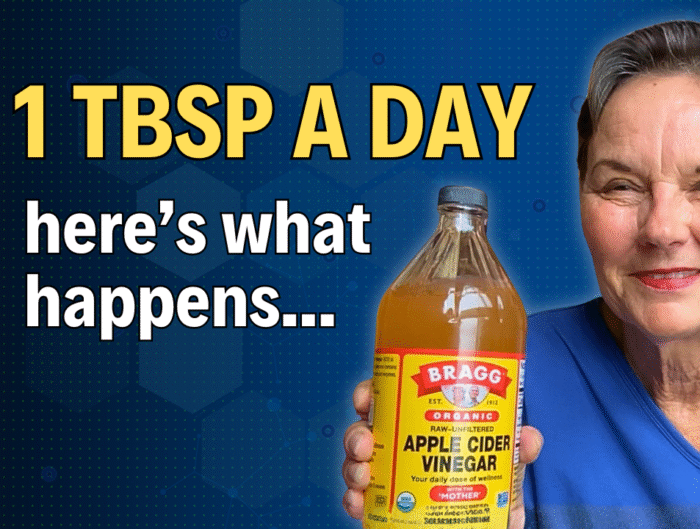The FDA recently announced that it’s banning Red #3, a synthetic dye used in food, drinks, and some medications due to links to cancer in animals. Although a step in the right direction, red dye #3 or erythrosine has been a topic of much debate, many petitions, research, and advocacy from the Environmental Working Group (EWG), the California Assembly’s Committee on Health, and many parents. In fact, California put a ban on this dye and several other substances in 2023.
Here are five things you need to know about Red Dye #3:
- Although announced in January of 2025, companies have until Jan. 15, 2027, to remove it from foods and Jan. 18, 2028, to remove it from drugs and medications. Therefore, we must learn to read labels when deciding what to buy in the grocery store. We can find alternatives that don’t have this until its ban from food in 2027, but there’s not much we can do about the medications that have three years to transition Red Dye #3 out.
- It’s an iodine-based petroleum product that’s been linked to cancer in animals. This was the final blow that caused the FDA to pull the trigger after many years of petitions and pleas from many consumer groups. Although evidence linking humans is limited, research in 1988 linked this dye to thyroid tumors in lab animals. A more recent study in 1997 found that this dye can damage DNA-activity in human breast cells. This could increase the risk of breast cancer.
Additional animal studies also urge us to use caution with synthetic dyes. Yet, another study tested six dyes including Red Dye #3. This study concluded from the in vivo and in vitro studies, that a high chronic intake of food colorings throughout the entire life is not advisable. All of the six tested food colorings increased tumor cell growth. This motivates us to be cautious about all synthetic dyes and possibly other additives.
- Some studies suggest that red dye #3 and several other dyes may exacerbate hyperactivity and attention issues in children. So Red Dye #3 has links to ADHD, but it is not the only dye. There are actually seven certified food colors: Blue Dye #1b, Blue Dye #2, Green Dye #3, Yellow Dye 4b, Yellow Dye #5b, and Red Dye #40 in addition to Red Dye #3. With artificial food colorings quadrupling in the past 50 years, the study recommends minimizing children’s exposure to AFCs and substituting foods with natural colorings used.
- Some studies suggest that red dye #3 may interfere with hormone levels including thyroid hormones. This dye along with other food additives is a potential source of endocrine-disrupting chemicals. As an estrogen-driven breast cancer survivor, this possibility as well as the effect on children concerns me the most. As an elementary counselor for many years who saw the rise of ADHD in too many children, I began suggesting 25 years ago, that parents avoid foods processed with artificial dyes and chemicals.
- Red Dye #3 is found in candy such as lollipops, gummies, and chocolate-coated candies. frostings, pastries, pop tarts, cereals with colored candy, and cake mixes; beverages such as fruit punch and even some soda; and medications and supplements including children’s vitamins. This is why I recommend Mary Ruth’s all organic vitamins which use natural colors. Whole foods such as strawberries, pomegranates, purple sweet potatoes, beets, and blueberries in powder form can be used as natural colors.
We live in a culture with an increasing amount of chemicals and additives. Therefore, as parents and concerned individuals, we must become food detectives by being informed and reading labels. I’m encouraged that the FDA has finally stepped forward to do this, but they are falling behind many countries in the European Union, Australia, New Zealand, and Japan who removed such things years ago or require a warning label on the front of the packaging. Awareness is our best protection.
More research needs to be done, and this is just a start. More dyes and chemicals need to be removed. As parents become more informed, a company would be wise to remove such chemicals and dyes ahead of any future bans to show that they are concerned about protecting the consumers—especially children.
And now that RFK, Jr. has been confirmed as head of DHHS, I expect he will be leading the charge on removing more food additives, chemicals, and dyes from our foods.
How many foods, vitamins, or medicines are you or your family using?
View this message on YouTube:
Five Things You Need to Know About Red Dye #3
For Your Health,
Ginny
 Ginny Dent Brant is a speaker and writer who grew up in the halls of power in Washington, DC. She has battled cancer, ministered around the world, and served on the front lines of American culture as a counselor, educator, wellness advocate, and adjunct professor. Brant’s award-winning book, Finding True Freedom: From the White House to the World, was endorsed by Chuck Colson and featured in many TV and media interviews. Unleash Your God-Given Healing: Eight Steps to Prevent and Survive Cancer was released in May 2020 after her journey with cancer and was recently awarded the First Place Golden Scrolls Award for Memoirs, a finalist in Serious Writers Book of the Decade, and Second Place in both Selah Awards for Memoirs and Director’s Choice Award for Nonfiction at the Blue Ridge Mountain Christian Writer’s Conference. It recently received the Christian Authors Network’s (CAN) Gold Award for Excellence in Marketing for reaching 62.5 million people with a message of cancer prevention and survival. It was written with commentary from an oncologist and was featured on CBN’s Healthy Living Show, Atlanta Live, and CTN’s Homekeepers along with over 75 media outlets. Learn more and cancer and wellness prevention blog and book information at www.ginnybrant.com. Ginny is on YouTube
Ginny Dent Brant is a speaker and writer who grew up in the halls of power in Washington, DC. She has battled cancer, ministered around the world, and served on the front lines of American culture as a counselor, educator, wellness advocate, and adjunct professor. Brant’s award-winning book, Finding True Freedom: From the White House to the World, was endorsed by Chuck Colson and featured in many TV and media interviews. Unleash Your God-Given Healing: Eight Steps to Prevent and Survive Cancer was released in May 2020 after her journey with cancer and was recently awarded the First Place Golden Scrolls Award for Memoirs, a finalist in Serious Writers Book of the Decade, and Second Place in both Selah Awards for Memoirs and Director’s Choice Award for Nonfiction at the Blue Ridge Mountain Christian Writer’s Conference. It recently received the Christian Authors Network’s (CAN) Gold Award for Excellence in Marketing for reaching 62.5 million people with a message of cancer prevention and survival. It was written with commentary from an oncologist and was featured on CBN’s Healthy Living Show, Atlanta Live, and CTN’s Homekeepers along with over 75 media outlets. Learn more and cancer and wellness prevention blog and book information at www.ginnybrant.com. Ginny is on YouTube
Link to buy book at Unleash Your God-given Healing
Click to sign up to take Conquering Cancer Course
Ginny is a cancer coach. Make an appointment to meet with her:




